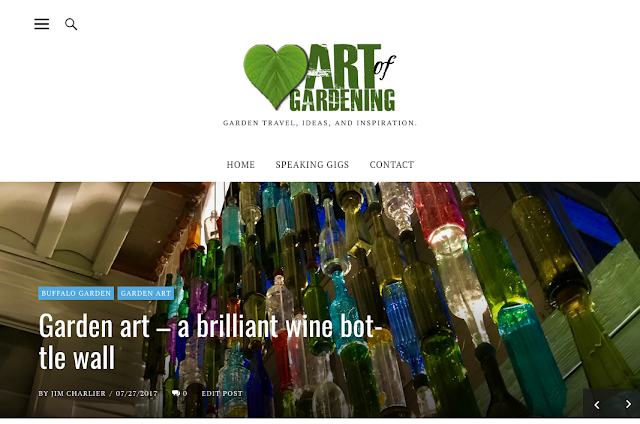 |
| This swan fountain represents the local identity and knighthood. |
Hohenschwangau Castle is in Bavaria, Germany, in the Alps, on the southern border of Germany, near Austria. The original castle was built in the 12th century, but was destroyed over the centuries in various wars. The ruins were acquired by King Maximillain II of Bavaria and he rebuilt the castle according to the original plans.
There are two castles on hills across the valley from each other -- the more impressive-looking castle is across the valley, built by Max's son, Ludwig II of Bavaria. You can see it in the photo above, across the valley, in the foothills of the Alps. As impressive as Ludwig's castle is, it really didn't have a garden, unless you include the room built to look like a grotto inside the castle.
The gardens, even here, were not the formal expansive gardens of some of the schloss gardens we visited. They seemed as though they were an afterthought and look a bit too contemporary. They were laid out by a "theater architect" Domineco Quaglio. It was extended in 1851. In 2007, the garden was rearranged according to its original state in the 19th century. The interpretive signage really didn't reveal much about the gardens at all. I guess we should just feel fortunate they were in English.
 |
Here's Hohenschwangau seen from the valley.
Swan imagery could be found everywhere. Here's one on top of the castle. |
 |
Down in the valley was a small village. This is one of the signposts describing what could
be found in the village, originally intended for people that could not read.
I'd love to have something like this in my garden, though most of my visitors can read. |
 |
| A pretty building in the village. |
 |
Informal grasses seem too modern and casual for a castle garden.
I expected something more formal with flowers for cutting, or medicinal herbs. |
 |
Ground covers made a nice green wall along the rock foundation of the building.
Probably wouldn't keep invaders out, unless it's poisonous! |
 |
| King Ludwig's Castle, across the way. |
 |
The centerpiece of the garden was this fountain, modeled after an example
in Spain's Alhambra garden. It represents the Orient. |
 |
| I don't think Agave are native in the Alps! |
 |
The valley below, mostly tourist accommodations, shops and restaurants.
Bring coins. Bathrooms cost. learned THAT the hard way. |
 |
| See what I mean, doesn't it look a little too contemporary, and pedestrian, for a castle? |
 |
| Hohenschwangau seen from Ludwig's Castle, which I'll post about later this week. |


















Isn't this a gorgeous place with an amazing real ? castle ! LOL
ReplyDeleteWe were there in winter and I can safely say we should have waited for your time of year to be there and to see the gardens .. plus it might have been less nerve wrecking driving on those roads that time of year ? haha
The castle is engraved on the pendulum of our grandfather clock we bought while living in Holland .. so I am reminded of it every day : ) Joy
Wonderful pictures !
i like this gorgeous place i love it
ReplyDeleteIncredible tour.
ReplyDeleteThe signpost is my favorite part of the tour. You are right, it would make a nice addition to any large garden or home. Some entrepreneur needs to get busy making a home-size version.
ReplyDeleteThanks for taking me along on your visit.